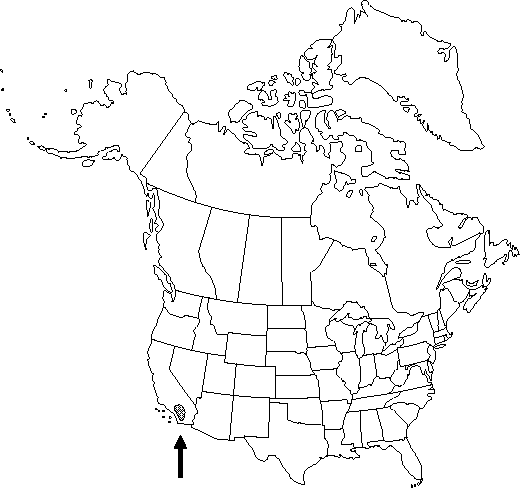Berberis nevinii
in A. Gray et al., Syn. Fl. N. Amer. 1: 69. 1895.
Shrubs, evergreen, 1-4 m. Stems ± dimorphic, with elongate primary and short or somewhat elongate axillary shoots. Bark of 2d-year stems grayish or brownish purple, glabrous. Bud-scales 2-3 mm, deciduous. Spines absent. Leaves 3-5 (-7) -foliolate; petioles 0.2-0.7 cm. Leaflet blades thin but rigid; surfaces abaxially dull, papillose, adaxially dull, glaucous; terminal leaflet stalked in most or all leaves, blade 2.1-4.1 × 0.7-1.1 cm, 3-6 times as long as wide; lateral leaflet blades lanceovate or lance-elliptic to lanceolate, 1-veined from base, base obtuse or rounded, margins plane or undulate, toothed, each with 4-11 teeth 0-1 mm high tipped with spines to 0.4-2 × 0.1-0.2 mm, apex acuminate. Inflorescences racemose, lax, 3-8-flowered, 2-5 cm; bracteoles membranous, apex acuminate, sometimes with proximal bracteoles leathery, spinose-acuminate. Flowers: anther-filaments with distal pair of recurved lateral teeth. Berries yellowish red to red, not glaucous, spheric, 5-6 mm, juicy, solid.
Phenology: Flowering winter–spring (Feb–May).
Habitat: Sandy slopes and washes in chaparral, coastal scrub, and riparian scrub
Elevation: 0-600 m
Discussion
Of conservation concern.
Berberis nevinii is known from scattered populations from San Francisquito Canyon, north of Valencia, south to Dripping Springs, near Aguanga. It is susceptible to infection by Puccinia graminis.
Selected References
None.
Lower Taxa
"thin" is not a number.
